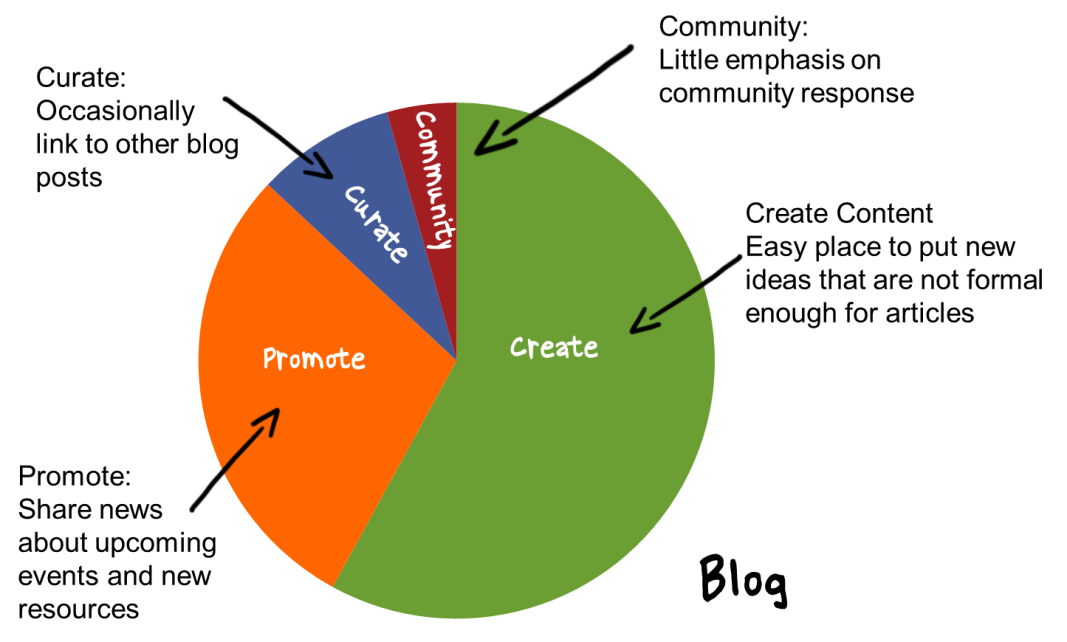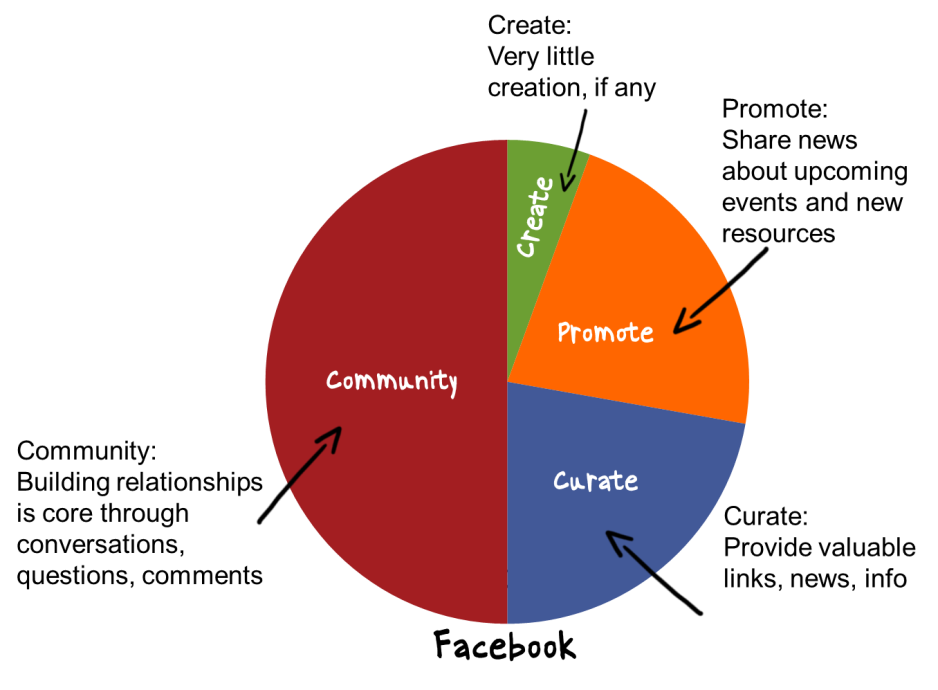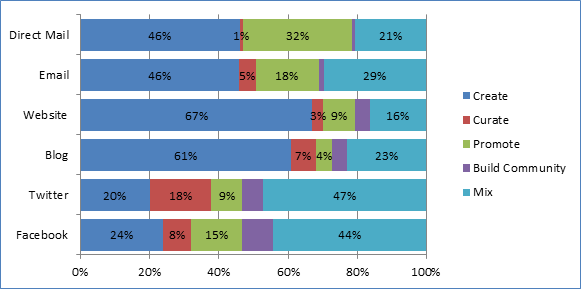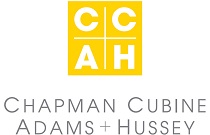
|
Part 2: Mapping Your Mix — Is Your Nonprofit Providing the Right Mix of Content?
|
|
Posted by Guest Blogger at Jan 02, 2014 07:04 AM CST
|
This article was written by guest author Laura Quinn, founder and executive director of Idealware, a nonprofit that helps other nonprofits make smart decisions about software. For more information about your organization’s communications mix, download Idealware’s free Practical Guide to Integrated Communications, which provides a series of workbooks to walk you step-by-step through the process of integrating all your channels into cohesive messaging. This article originally ran in NTEN:Change.
In my last post about providing the right mix of content, I wrote about the types of content-related efforts you should be making. But what’s the balance you should aim for? You will likely have a different mix on each channel. For instance, you might decide that the vast majority of information on your blog should be new stories and opinion pieces written specifically for the blog, but that the primary goal of your Facebook page is to build community and promote events and resources.
Consider what types of content will work best for each channel, and how much of each type your organization is likely to need. It’s useful to diagram out the mix for each channel. We like to use a pie chart, as it provides a tidy circle for each channel that you can then combine into additional diagrams. As an example, here’s a possible mix of types of content for a blog:

But that mix is likely to change for different channels. Here’s a different mix for a Facebook page:

Of course, the actual mix will depend on your organization and goals, but remember that different channels lend themselves better to different types of communications. For instance, direct mail and email are very important communications method for many organizations, but neither is a great way to build community. Instead, they’re both great places to share original content, to ask people to take action with promotions or appeals, or even to provide some curated resources or links as part of newsletter.
In a survey that we conducted last year with readers of the NTEN:Change journal, which is published by the Nonprofit Technology Network, we asked readers to define what percentage of their resources were creation, curation, promotion, or community building for each channel. (We received responses from 256 readers.) What we found, interestingly, was that many reported using each channel primarily for a particular purpose—for example, for a given organization 80 percent of what it does on a single channel is create new content, with only limited effort devoted to other uses.
The graph below illustrates this across each channel. The percentage in each bar represents the number of people using these channels primarily (at least 60 percent of the time) for the given purpose. The first bar shows that 46 percent of the respondents are using direct mail primarily to distribute created content, just one percent are using it to curate, and 32 percent are using it primarily for promotions and appeals. The last number, 21 percent, shows the number of people who were not using the channel for any one purpose a majority of the time.

Diving into these numbers in more depth, most people were using direct mail and email either primarily to deliver newly created content, or to promote existing events or appeals. For example, 46 percent of everyone using direct mail or email use it primarily (at least 60 percent of the time) for creating content. Another 32 percent use direct mail primarily for promotions or appeals, while 18 percent use email primarily for that purpose. Respondents told us their websites and blogs filled similar roles to each other—67 percent were using websites and 61 percent blogs primarily for newly created content. A much smaller percentage were using these channels primarily for promotion, curation, or community building.
The most informal of the social media channels, Twitter and Facebook, often fill a very different role. More people were using these channels for curation than any other—the formats and “etiquette” of both channels are both well-suited to reposts and links—and more were focused on community building, a natural fit for social media. While some people still used them primarily to deliver original content, it’s not an optimal use for them, as neither is as good a means of delivering a lot of text or a series of images as email, websites, or blogs. Respondents also tended to have more complex strategies for these channels, with close to half reporting that they did not use them primarily for any one content strategy but instead for a mix of purposes.
Putting it to Work
So what does this mean for your organization, and how can you apply this information to your own work? Start by making a list of the channels you’re using, or would like to use, and think through the types of content you’re providing for each. Map them out in a chart, and consider whether your strategy makes sense.
Does it correspond well to your communication goals? Is something not working that you can change for better results? For instance, if you’re creating all new content for every channel, but curating existing content will provide as much value, making a change can save you a lot of time.
Remember, there’s no absolute right answer—it’s a work in progress, so don’t be afraid to change things around if they’re not working. In the end, mapping them out can help you think them through by more clearly showing what you’re doing, help you to be more strategic about how each channel is contributing to your overall goals, and lead to better communications.


















